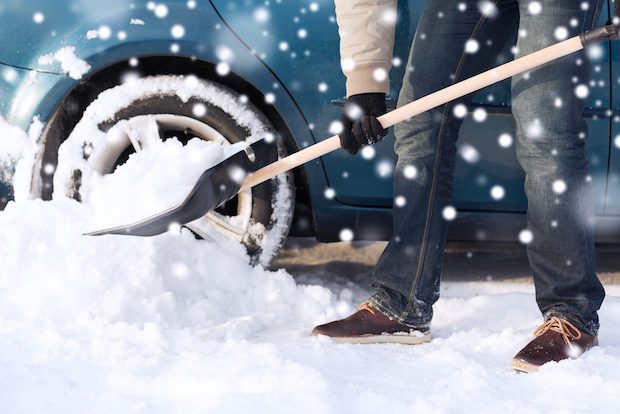How to Keep Walking In a Winter Wonderland

For years, urban public policy has promoted the elimination of highway fatalities known as “Vision Zero.” And in the midst of growing concern around climate change, transportation policy in American cities is curiously schizophrenic. For nine months of the year, when temperatures are decent and precipitation is limited to rain, most cities encourage people to use alternatives to cars and reduce carbon footprints.
But come winter in many parts of the country, it all goes out the window.
Winter often reveals a preference for cars over other forms of transportation on the part of policymakers, or at least an assumption that everyone will have access to a vehicle when the weather gets cold. One interesting phenomenon is called a “sneckdown,” which appears where roads have been overbuilt; some snow remains after some roads are plowed and driven on. Transportation activists record the storms, and they are remarkably consistent from storm to storm and year to year.
Many cities informally allow residents to claim parking spots they dig out after snow storms. The main result of this seems to be escalating violence as people argue over who dug out which spot, or slash each other’s tires for parking in one. Many cities promote cycling with protected bike lanes in the warmer months, but during winter they use bike lanes to store plowed snow.
Another way is revealed by what types of pathways are cleared. Where snow is common, American cities clear the roadways for cars, but often rely on property owners to clear sidewalks, crossings, and, as mentioned, bus stops. The result is that, in heavy or frequent snow, pedestrian and transit infrastructure can become completely unusable since property owners spend all their effort digging out their cars and shoveling their driveways. It is especially common for ramps installed under the Americans With Disabilities Act to be unusable into spring because the snow plows keep piling snow and slush in them, creating great troughs of icy water no one in a wheelchair or walker can travel through.
According to Grist, enforcement of fines for failing to clear sidewalks in New York City is “between spotty and non-existent.”
That seems to be the case in other American cities, as well. In Boston and Cambridge, enforcement is left to the pedestrians themselves by taking pictures of problem areas and sending them to the city. This is, of course, problematic because it assumes that people will be able to walk to the problem areas, but it also doesn’t take into account the scale of the problem—a walking trip of a mile could involve crossing the street multiple times and passing in front of hundreds of properties. A body camera to video it all would be more useful.
Even better is the radical idea that, as Grist says, cities started thinking that “Sidewalks are as much of a public good as roads and pedestrians should be as entitled to safe, ice free surfaces as cars.”
Another factor is that the average age of homeowners, especially in large cities, is rising. Boston’s West Roxbury neighborhood, for example, is an example of a naturally occurring retirement community because an increasing percentage residents are older people aging in place. The elderly are less able to safely shovel large amounts of snow. According to the BBC, around 100 people die every winter in the United States as a result of heart attacks sustained while shoveling. One doctor interviewed even said that no one over the age of 55 should shovel snow.
With a better approach to snow removal, cities could substantially change their approaches to the winter season. Instead of seeing snow as an inconvenience, with parking and slush, walking, biking, and transit could become much easier than dealing with private vehicles—and cities should offer similarly attractive activities in the summer. For example, some European cities are famous for the Christmas markets that are temporarily erected in major squares, while Canadian Quebec City has had a winter carnival since 1894. Until the early 19th century, London had “frost fairs” whenever the River Thames was frozen enough.
There is no excuse for why we can’t enjoy cities in winter as much as we do in more temperate seasons—and many good reasons for not prioritizing cars when it’s cold out.
Matthew M. Robare is a freelance journalist based in Boston. Follow New Urbs on Twitter for a feed dedicated to TAC’s coverage of cities, urbanism, and place.
Comments